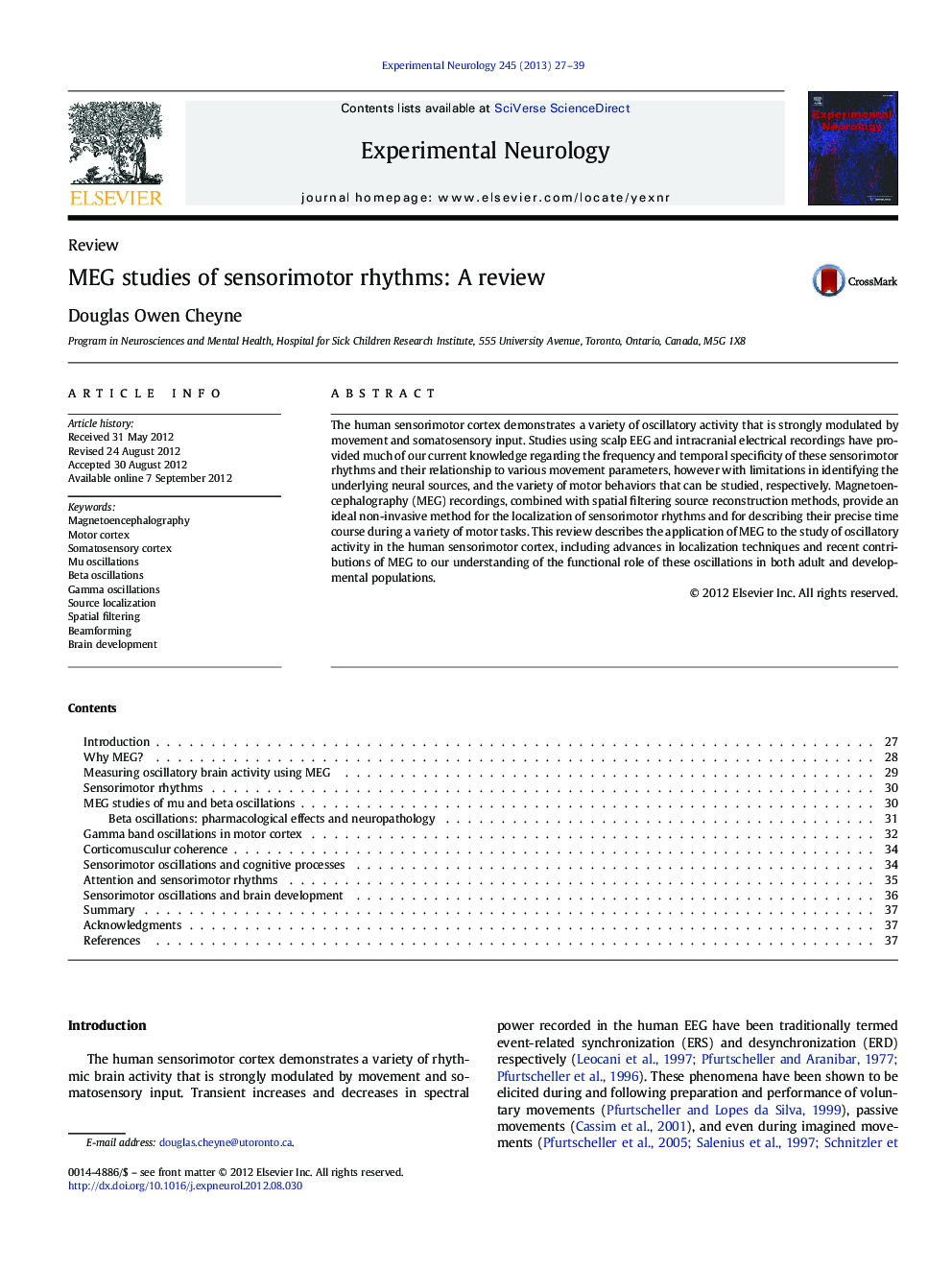| Article ID | Journal | Published Year | Pages | File Type |
|---|---|---|---|---|
| 3055575 | Experimental Neurology | 2013 | 13 Pages |
The human sensorimotor cortex demonstrates a variety of oscillatory activity that is strongly modulated by movement and somatosensory input. Studies using scalp EEG and intracranial electrical recordings have provided much of our current knowledge regarding the frequency and temporal specificity of these sensorimotor rhythms and their relationship to various movement parameters, however with limitations in identifying the underlying neural sources, and the variety of motor behaviors that can be studied, respectively. Magnetoencephalography (MEG) recordings, combined with spatial filtering source reconstruction methods, provide an ideal non-invasive method for the localization of sensorimotor rhythms and for describing their precise time course during a variety of motor tasks. This review describes the application of MEG to the study of oscillatory activity in the human sensorimotor cortex, including advances in localization techniques and recent contributions of MEG to our understanding of the functional role of these oscillations in both adult and developmental populations.
